The weather is beginning to change. There are now more rainy days with brief intervals of sun, generally shining in the morning. Most of the nights are wet, with the rain beginning in the early hours of the evening then continuing through till dawn. The rain is not heavy but it is constant. This will now be the pattern until mid-November. The opportunities to get out and take photographs is going to become more and more limited as the days and weeks go by.
Ogre-faced Spider
Sometimes you just have to be lucky and find yourself in the right place at the right time. Many years ago I had taken some photographs of a particular species of spider and since then had been hoping to see this species again to get a close up of one of its startling features, the eyes. I have come across it several times over the years but, unfortunately, never when I was carrying the camera. Last week my luck changed and I found one without actually looking for it and I did have my camera in hand.
The spider in question is an Ogre-faced Spider, (Deinopis sp), of the family: Deinopidae. Once you see the spider in close up then the reason for the name will be revealed. Those two large, forward-facing eyes give the appearance of a mythical ogre staring at you.
The Ogre-faced spiders are not typical orb-weavers, they belong to a group known as lace-web weavers and have evolved a different means of employing silk to catch prey. There are only 57 species of Ogre-faced spiders but they are found throughout the tropics. They have long legs and a long abdomen, (opisthosoma). If they do move, it is slowly and deliberately. The coloration matches the tree bark on which they are commonly found hanging in a head down position. During the day they lie flat against the tree to avoid being seen. But as the sun sets they move into position and set about constructing the ingenious part of its prey capturing trap which is held between the front two pairs of legs.
These four legs have a dry silk frame strung between them. Attached to the frame is a net made from sticky elastic silk. An unsuspecting prey item passing below the spider is in for a nasty surprise. The spider, connected by a dragline drops and opens the front four legs which extend the net. It is dropped onto of the victim and when the legs are drawn together again the net closed and ensnares the spiders next meal. The web is shaken a few times to ensure the prey is completely enmeshed, all the while the spider is wrapping in more silk from the spinnerets and continually biting its prey to inject the venom. The secured and now deceased prey is held in the palps while the spider feeds and at the same time constructs a new net ready for the next meal to arrive.
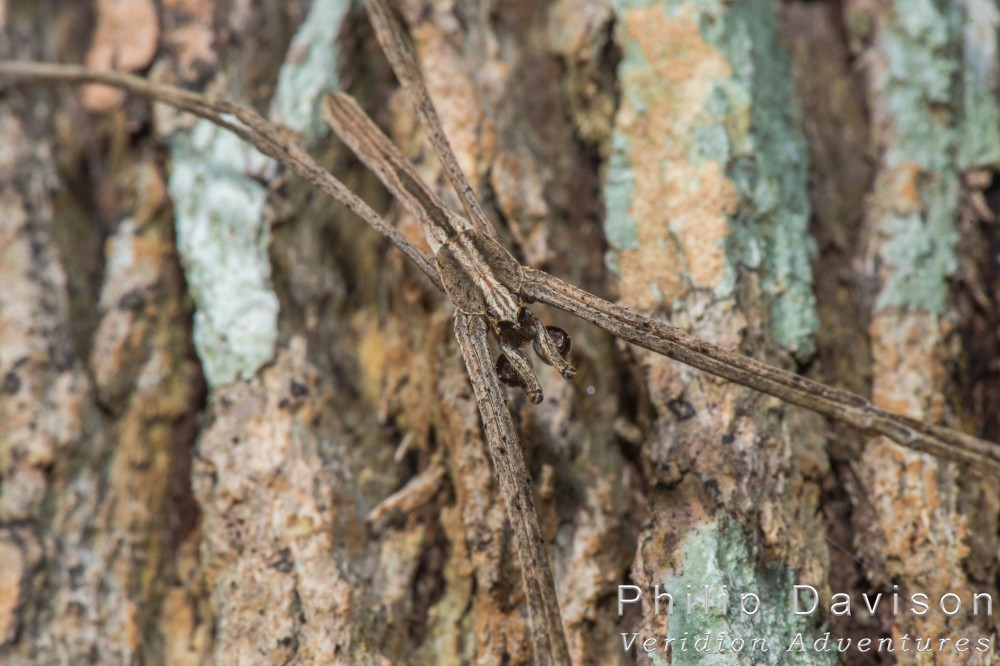
The long-legged, long-bodied Ogre-faced Spider
The feature I was interested in were the eyes. At 1.4mm in diameter, these forward-facing eyes are the largest simple eyes possessed of any land invertebrate. The eyes have an equivalent camera f/stop of 0.6 which enable them to see very well in dark conditions, the time when the spider hunts. This, combined with retinal receptors capable of absorbing the smallest amount of ambient light, 2000 x more than other spiders, means they can hunt in, what to you and I, is total darkness. You can’t see the spider but the spider can see you. Also, this one was a male as can be seen from the enlarged pedipalps under the front of the head. These are used during spider mating.
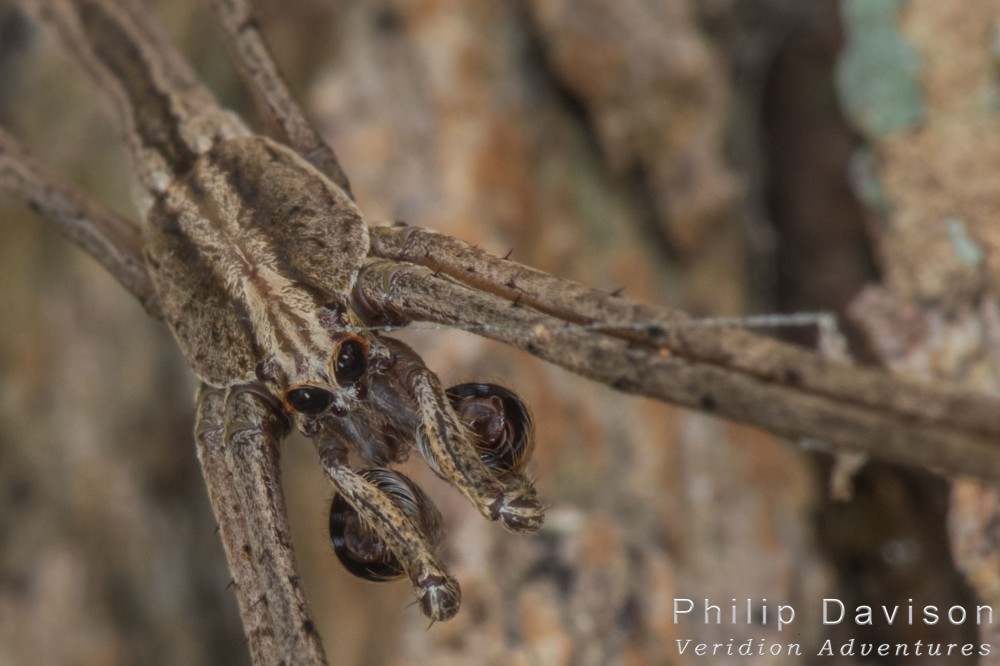
Now you can see those eyes and the features that give it the name; Ogre-faced Spider
Weirdness on the Web
It has been a spidery kind of week. When I was out walking the trails I noticed a small web strung across the path with what I first thought was a small spider removing the papery veil of a Jacaranda seed that had landed there. In the past I have seen various orb-weavers cutting the silk securing an unrequired piece of material that had land in the web, hold it out with their legs until free of the web and let it drop to the ground. Not too far down the same trail I saw a similar thing so I decided to take a closer look. The spider itself was very small and with the naked eye it looked strange, I had not seen this species before and could not quite make out the form. Something just wasn’t right.
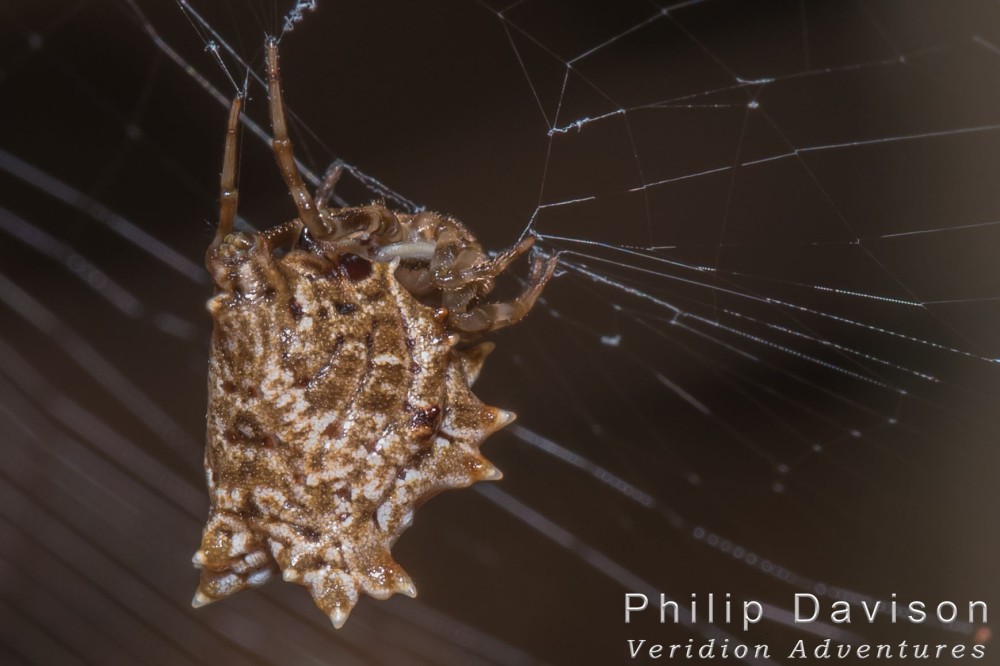
Spiny Micrathena hanging from web, viewed from behind
I took several photographs and looked on the camera screen. The body of the spider was unlike any I had previously seen. The abdomen, (opisthosoma), was drawn up dorsally and expanded laterally. It was covered in a series of fleshy, thorn-like protuberances. I was looking at a Spined Micrathena, (Micrathena gracilis). During the course of the day I found 3 of these spiders, which is strange because I had never seen this species before. Later, when back online and researching more information, I learned it is quite common and widespread. Oh well, new for me and happy to have finally made its acquaintance.
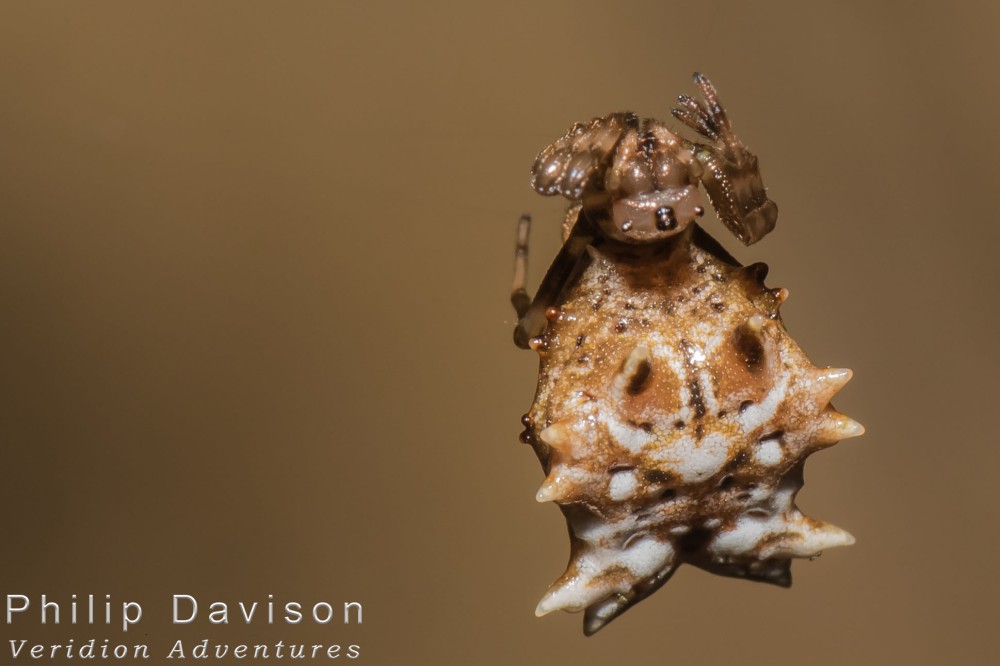
Dorsal view of Spiny Micrathena Spider
Only a few meters down the trail from where I photographed the Spined Micrathena I found another web traversing the path at about 6 feet above the ground. Sitting in the center was yet one more spider that I was unfamiliar with. I knew it was one of the Spiny-bodied Spiders, of which I have found a variety of different species over the years. Unlike Micrathena gracilis above, most Spiny-bodied Spiders are brightly colored and elongated with spines and thorns projecting from the body, sometimes giving them an arrow-shape. I knew this was a Micrathena, the body was long with black centered red spots on a yellow background and with only two more fleshy spines pointing backwards from the abdomen. Extensive searching failed to produce a name for this species. So two new spiders in one day and within several feet of each other.
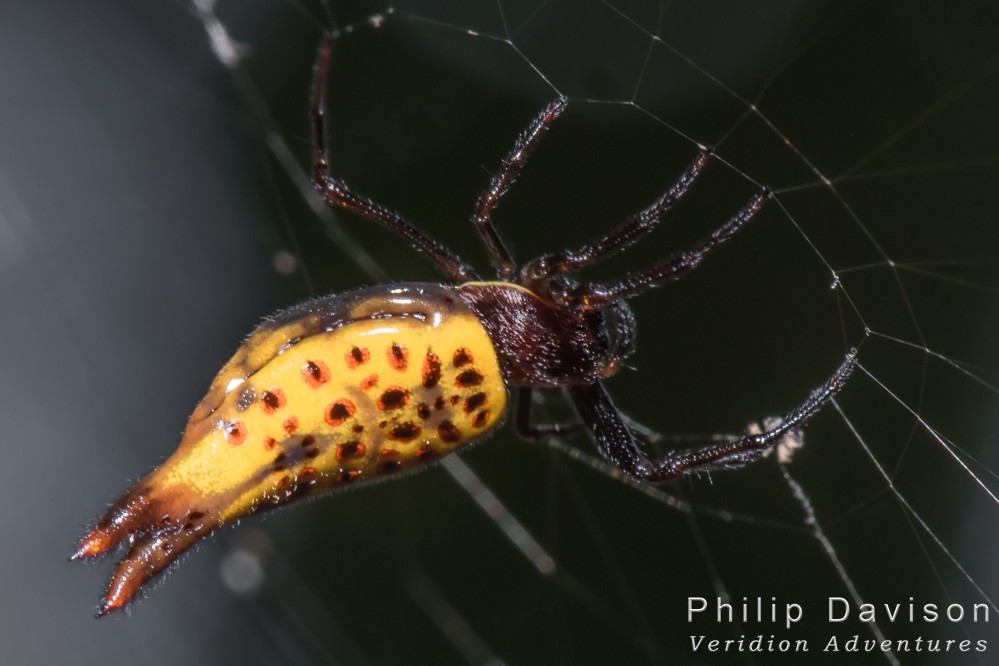
Strange Spiny-bodied Spider, (Micrathena sp), awaiting identification
Finally I noticed a small web strung not too far above my head in the open garden area. In the center of the web was a small brightly-colored but very distinctively spider. The abdomen was vivid lemon yellow with a series of black spots drawn out sideways into an oval shape bearing ferocious looking thorns around the edge. This was another Spiny-bodied Spider, (Gasteracantha cancriformis).
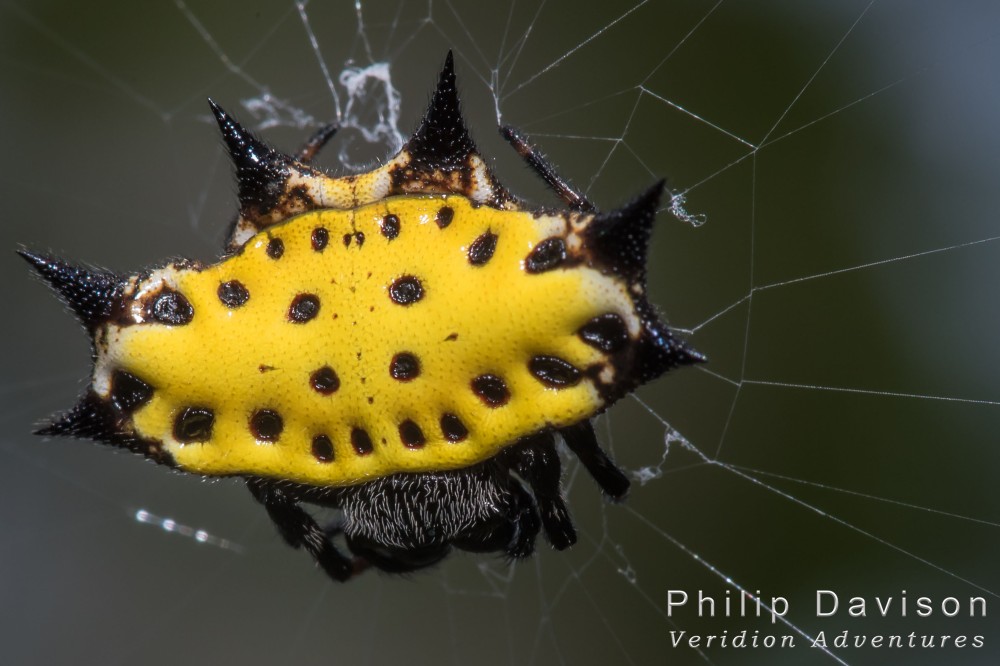
Spiny-bodied Spider, (Gasteracantha cancriformis)
They are a very common species but are so small that you generally don’t notice them until you walk into the web. To avoid this situation the silken strands securing the web are flocked with fluffy pieces of silk to make it more obvious to larger creatures. They come in various color, yellow, white and red being the commonest. They are very widespread, being found from southern U.S. to northern Brazil and everywhere in-between including the Caribbean Islands.
It is a very short-lived spider; the females die after producing an egg cocoon and the males die a short time after mating. In certain locations it is another spider that has a reputation it does not deserve. Some of the native populations regard it as being very venomous. It is quite harmless.
Philip Davison Is a Biologist, Writer and Photographer Based in Costa Rica
Very cool post, Phil……………..Keep up the great work.
LikeLike
Thanks Richard.
LikeLike
Thanks Philip… must be a lot of pixels in those pics… too fun zooming in on your detailed, scary spider photos with my fingers on the ipad touch screen… crisp, clear images
Fall webs are all over here from house to shrubs to trees.(European Garden Spiders?) We like them… Good collectors of flying pests.
Oh yeah… hitting a spider web on the trail makes me go into instant limbo mode… I seem to wear less of the web that way…
LikeLike
Cheers Fred. Could be a new party game – Spider web limbo- you don’t always see what you are going under. I try to keep as many pixels as possible.
LikeLike